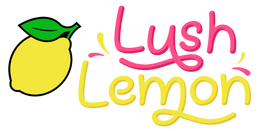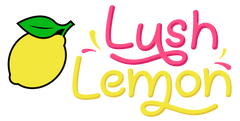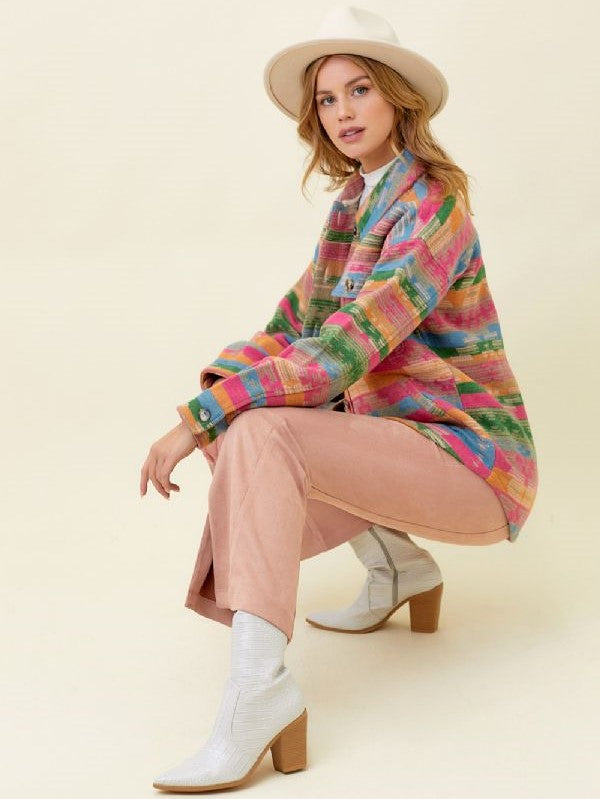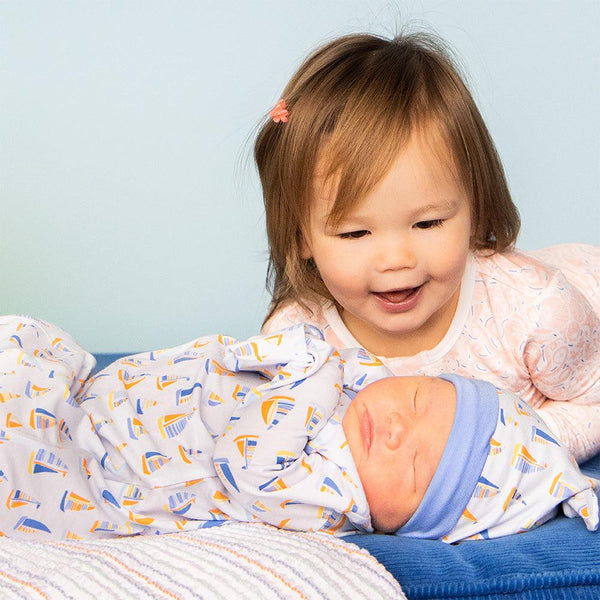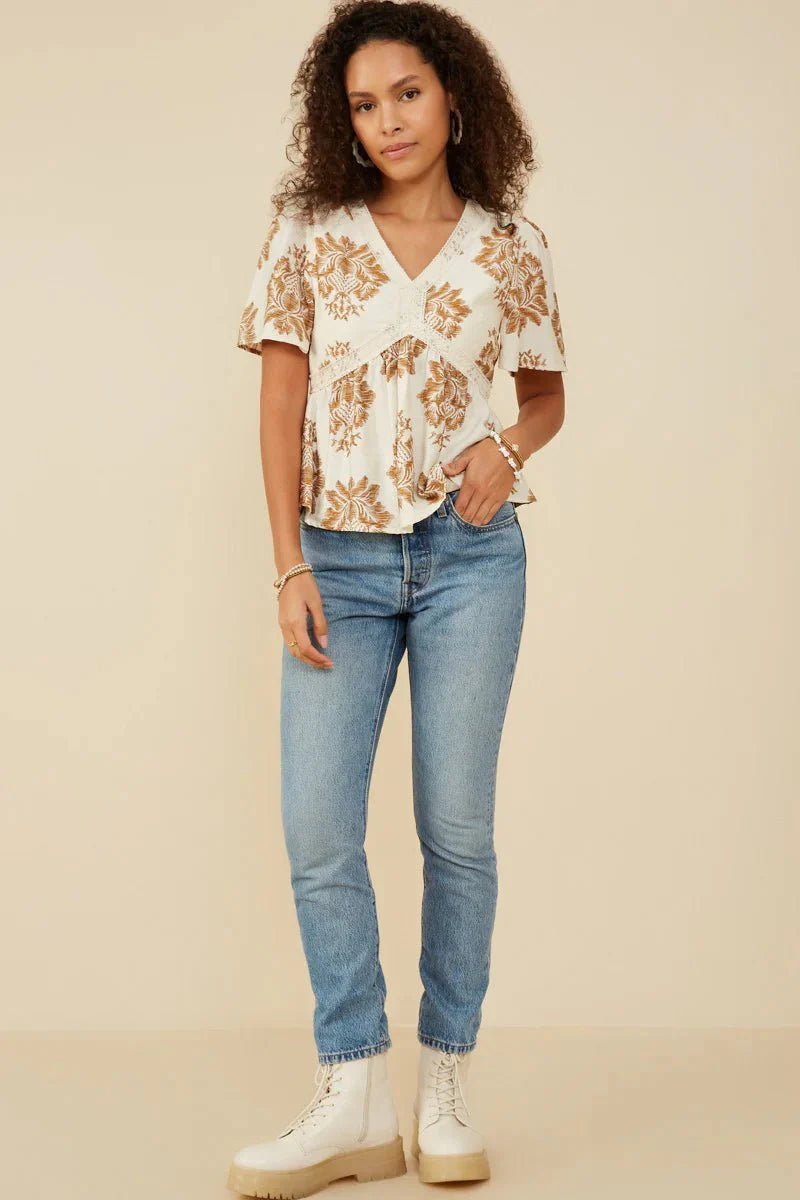Fashion moves in cycles, but predicting what will capture our collective imagination next season requires looking beyond fleeting social media moments to identify the deeper cultural shifts and design innovations that create lasting appeal. As we move into the latter half of 2025, several key trends are emerging that suggest fascinating directions for autumn and beyond.
The Return of Structured Romance
One of the most compelling movements we're seeing is the marriage of romantic details with structured silhouettes. This isn't the flowing, bohemian romance of previous seasons, but rather a more architectural approach to feminine design. Think flutter sleeves paired with tailored bodies, or delicate eyelet details incorporated into precisely cut garments.
Our flutter sleeve pintuck dress with elastic waist exemplifies this emerging aesthetic perfectly. The pintuck detailing provides structure and visual interest, while the flutter sleeves add that essential romantic element. The elastic waist offers modern comfort without sacrificing the overall polished appearance. This combination of practical comfort with romantic detail represents exactly where fashion is heading.
The trend extends beyond dresses into tops and blouses, where we're seeing puff sleeves return with a more refined approach. The poppy bloom puff sleeve top demonstrates this evolution—the puff sleeve element provides the romantic touch, while the overall construction remains clean and contemporary. This balance between whimsy and sophistication appeals to women who want feminine details without sacrificing modern sensibilities.
Textural Storytelling
Next season will be heavily influenced by texture as a primary design element. Rather than relying solely on color or print to create visual interest, designers are increasingly turning to fabric manipulation, weaving techniques, and surface treatments to tell their stories. This shift reflects a growing appreciation for craftsmanship and tactile experiences in our increasingly digital world.
The textural trend manifests beautifully in pieces like our textured floral tiered v-neck dress, where the surface interest comes from the fabric treatment itself rather than just the floral pattern. This approach creates depth and dimension that photographs beautifully for social media while providing the tactile satisfaction that online shopping often lacks.
Lace textures are experiencing a renaissance, but in more sophisticated applications than we've seen in recent years. Our textured lace v-neck top represents this evolution—the lace element provides textural interest and feminine appeal, while the v-neck cut and overall styling keep it feeling contemporary rather than costume-like. This modern approach to traditional textural elements will define much of next season's most successful pieces.
Strategic Color Blocking
Color blocking is returning with a more strategic and wearable approach than its previous iterations. Instead of bold, primary color combinations, we're seeing more nuanced approaches that create visual impact while maintaining versatility and sophistication. This trend reflects a desire for pieces that make statements without limiting styling options.
The colorblock arch mini dress with collar demonstrates this refined approach to color blocking. The arch detail creates visual interest through shape rather than harsh color contrast, while the collar adds a sophisticated finish that prevents the piece from feeling too casual. This type of thoughtful color and shape blocking will dominate next season's most coveted pieces.
This trend extends to smaller details as well, where contrast elements are used sparingly but effectively to create focal points and visual interest. The key is restraint—using color blocking as an accent rather than the primary design feature, allowing the wearer's personal style to remain the focus.
Contrast as Craftsmanship
The use of contrast elements in fashion is evolving from purely decorative applications to expressions of craftsmanship and attention to detail. Piping, trim details, and contrasting elements are being used to highlight construction techniques and celebrate the skill involved in garment creation.
Our floral contrast piped tiered dress showcases this trend beautifully. The contrast piping serves multiple purposes—it emphasizes the dress's construction lines, adds visual definition to the tiered silhouette, and creates a subtle but sophisticated detail that sets the piece apart from more basic alternatives. This type of thoughtful contrast work signals quality and intentional design.
This approach to contrast extends to button-up shirts and blouses, where trim details and contrast elements are being used to update classic silhouettes. The floral print button-up shirt with trim detail exemplifies this trend, using contrast elements to refresh a traditional garment type while maintaining its essential versatility and wearability.
The New Maximalism
While minimalism has dominated fashion for several seasons, we're beginning to see a shift toward a more maximalist approach—but one that's refined and intentional rather than chaotic. This new maximalism focuses on layering textures, mixing prints thoughtfully, and incorporating multiple design elements within single pieces.
The floral textured contrast print button-up shirt represents this evolution perfectly. It combines multiple elements—floral print, textural interest, and contrast details—without feeling overwhelming. This type of multi-element design requires skill to execute successfully, which is why it signals a move toward appreciation for complex craftsmanship.
This trend also reflects changing consumer preferences toward pieces that offer more visual engagement and styling versatility. Rather than buying multiple simple pieces, shoppers are increasingly interested in individual items that provide multiple styling opportunities and visual interest points.
Functional Beauty
Perhaps the most significant trend emerging for next season is the integration of functional elements as design features. Pockets, adjustable details, and comfort-focused construction are no longer hidden aspects of garment design but celebrated elements that add both utility and visual appeal.
The scallop trim floral pocket dress exemplifies this trend beautifully. The pockets aren't just functional additions—they're integrated into the design aesthetic through the scallop trim detail, making them both useful and decorative. This approach acknowledges that modern women need their clothing to work as hard as they do, while still providing the aesthetic satisfaction we expect from fashion.
This functional beauty trend extends to details like adjustable straps, elastic waistbands that don't compromise the silhouette, and construction techniques that prioritize both fit and durability. The goal is clothing that serves real-life needs while never appearing utilitarian or compromised in its aesthetic appeal.
The Drama of Minimalism
Paradoxically, as maximalist elements gain popularity, we're also seeing a parallel trend toward dramatic minimalism—pieces with clean lines and simple silhouettes that create impact through proportion, cut, or unexpected details rather than embellishment.
The eyelet open back maxi dress represents this approach perfectly. The silhouette is essentially minimal—a clean maxi dress shape—but the eyelet texture and open back detail create drama and visual interest without overwhelming the overall aesthetic. This type of restrained drama appeals to women who want to make statements without appearing overdressed.
This trend reflects sophisticated taste development among consumers who understand that the most impactful pieces often achieve their effect through subtlety rather than obvious decoration. It requires confidence to wear and skill to design, making it a marker of both personal style development and design sophistication.
Looking Forward
The trends emerging for next season reflect a fashion landscape that values craftsmanship, versatility, and thoughtful design over quick trend adoption. Consumers are becoming more discerning, seeking pieces that offer multiple styling opportunities, quality construction, and design elements that remain interesting over time.
The most successful pieces for next season will be those that combine multiple trend elements thoughtfully—perhaps textural interest with functional details, or romantic elements with structured silhouettes. The key lies in integration rather than addition, creating pieces that feel cohesive rather than trend-driven.
Understanding these emerging directions allows for more strategic wardrobe building, focusing on pieces that will feel current and relevant not just next season, but for seasons to come. The investment approach to fashion continues to gain ground, making trend awareness less about chasing every new development and more about identifying the movements that align with personal style and lifestyle needs.
